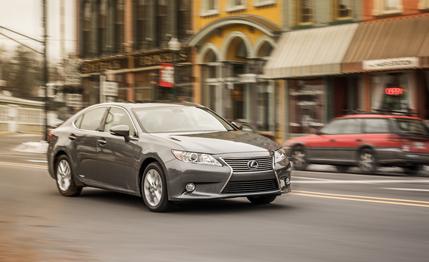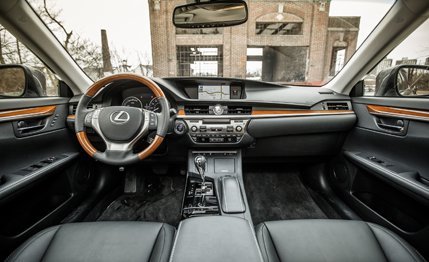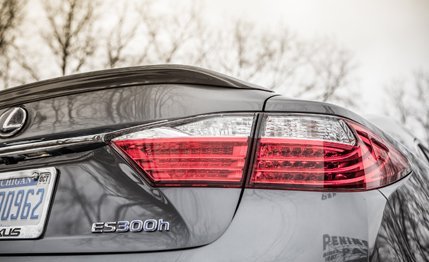
 Instrumented Test
Instrumented Test
Virtually identical to the V-6–powered Lexus ES350 in every respect but its powertrain, the ES300h is the brand’s first entry into the growing entry-luxury hybrid segment. Before you dismiss the ES300h as just another CAFE-compliance place holder aimed at buyers wary of conspicuous fuel consumption, consider this: Lexus is expecting 25 percent of all 60,000 projected 2013 ES buyers to select the hybrid version.
Same Hybrid Flavor, New Wrapper
Like the Camry hybrid system it emulates, the ES300h’s hybrid drivetrain employs two electric motors—referred to as the MG1 and MG2 in Lexus jargon—in addition to the 156-hp, 2.5-liter four-cylinder gasoline engine. The MG1 is a motor/generator that operates primarily as an engine-driven power source for the batteries; it’s also used to start the internal-combustion engine after Eco-mode-prompted shutdown at stoplights. The MG2 handles the electric portion of propulsion and switches into generator mode during periods of deceleration to provide regenerative braking. Lexus doesn’t quote power and torque figures for the MG2, citing only a gas-electric-system total of 200 horsepower. In the Camry version of the setup, Toyota supplies ratings of 141 horsepower and 199 lb-ft of torque for the electric motor alone, and it’s a good bet the ES300h’s MG2 is packing at least as much.


The Lexus’s liquid-cooled battery assembly consists of 34 nickel-metal hydride modules, each composed of six cells. The entire 1.6-kWh pack weighs 108 pounds. It resides under the rear seatback; the air intake, the junction box, and the service plug have been configured to reduce the power pack’s interior footprint. The ES300h gives up some trunk space, having 12.1 cubic feet compared with the ES350’s 15.2.
Shut Up and Drive, Quietly
The ES300h features three drive modes, just like its V-6 sibling: Normal, Eco, and Sport. Unlike its brother, the hybrid uses a continuously variable transmission. As hybrid CVTs go, this is a good one, but even in Sport mode, it can’t hide its contempt for total driver control. Normal mode is, well, normal, letting the vehicle make all the choices relating to performance and efficiency. Its operation is seamless. The ES is already so quiet and smooth, those listening to music or deep in conversation likely won’t even notice the gas engine starting and stopping. Eco mode aims to maximize fuel saving by reducing throttle response and modifying the operation of the climate-control system. In operation, it left us slightly irritated and a bit sweaty; apparently, Lexus expects that customers truly committed to saving fuel won’t mind arriving late and smelly.


For drivers with even a drop of sporting pretension in their blood—and we probably should limit it to just those folks–Sport mode is the ES300h’s salvation. Engaging it replaces the hybrid power monitor in the dash with a tachometer, signaling that things are as good as they’re gonna get. Sport mode seems to be calibrated to the sweet spot of the 2.5-liter four’s torque peak of 156 lb-ft, which is to say, not for economy.